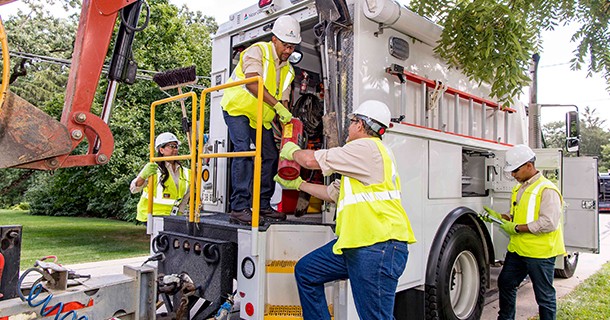Available Vehicles
In the light-duty category, there is a long list of late model vehicles, for which there is an EPA-approved after-market conversion system available. This includes many Ford vehicles available with the optional “gaseous engine prep” package (specially hardened engine components) making them eligible for conversion to CNG by Ford Qualified Vehicle Modifiers (QVMs). These vehicles can often be converted prior to delivery and purchased on a "ship through" basis from the dealer. To obtain information about aftermarket conversions and new or used vehicles that can be modified to operate on natural gas, visit NGV America.
In the heavy duty category, there are a number of new dedicated and dual-fuel natural engines which are being manufactured today. For example, Cummins-Westport, Inc., a joint venture between Cummins and Westport Innovations, offers the B6.7N, L9N, and ISX12N, which are spark ignited natural gas versions of the Cummins 6.7 liter, 8.9 liter and 11.9 liter diesel engines. Cummins has recently upgraded these engines to “Near Zero” (NZ), meaning they reduce NOx emissions by a further 90% from the previous version of the engine, which already met the national standard, from 0.2 to 0.02 grams/hp-hr. Also, when the natural gas is supplied from Renewable Natural Gas (RNG) sources like landfill gas and bio-digesters (which is becoming more available), it reduces the carbon dioxide equivalent (CO2e) emissions by 80 – 90% compared to diesel engines.
For more information please visit Cummins.
These engines are available in all manner of heavy duty vehicles; transit buses, refuse trucks, vocational trucks, delivery trucks, Class 8 tractor-trailers, etc. Just about every manufacturer of heavy duty vehicles now offers CNG and/or LNG versions of their vehicles. For more information, click here to see the Clean Cities guide for medium and heavy duty alternative fuel vehicles.



